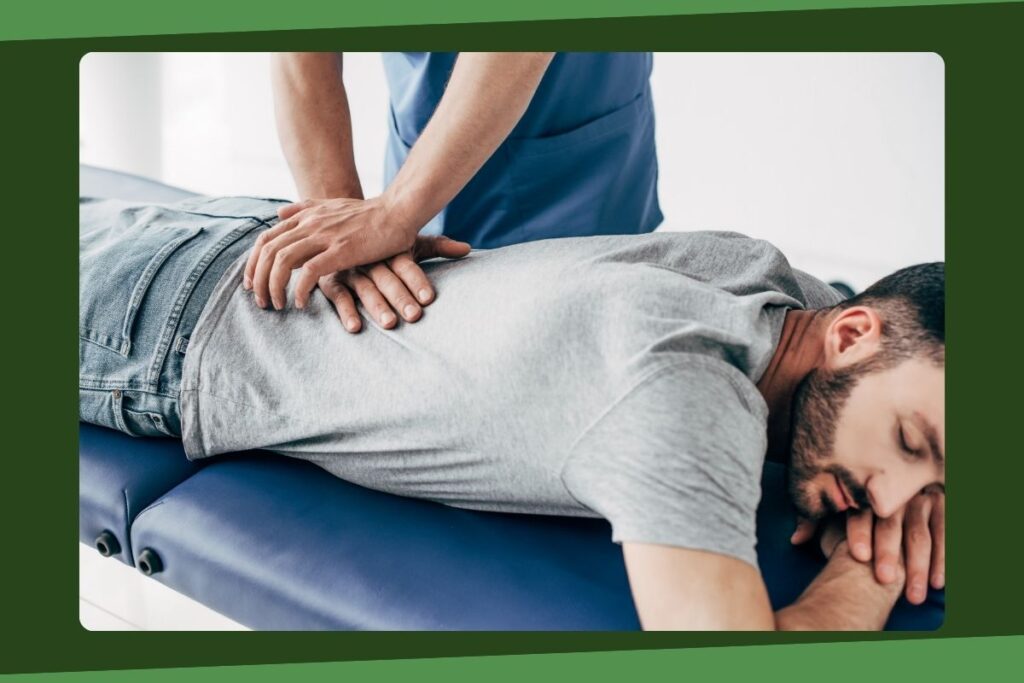Expert Advice for Visiting a Chiropractor for the First Time
Wiki Article
Discovering Spinal Decompression Strategies: What You Need to Know for Better Spine Treatment
Spinal decompression strategies are necessary for individuals experiencing persistent neck and back pain or spinal problems. These techniques range from non-invasive therapies to surgical alternatives, each created to ease pressure on the spinal column. Recognizing these methods is essential for efficient spinal column care. Nonetheless, not all methods appropriate for every problem. The subtleties behind each approach warrant closer exam, as they can greatly influence recovery and general health results. What variables should one consider before choosing?Understanding Spinal Decompression
Spinal decompression might sound complicated, it essentially refers to a variety of methods intended at relieving pressure on the spinal cable and surrounding nerves. The spinal column is a crucial structure that sustains the body and protects crucial neurological pathways. When compression takes place, it can bring about pain, discomfort, and reduced mobility. Recognizing spinal decompression includes acknowledging the root causes of this pressure, such as herniated discs, spinal stenosis, or injury. By resolving these underlying concerns, decompression techniques seek to recover proper placement and function. This procedure can entail both non-surgical and medical approaches, tailored to individual patient requirements. The goal is to enhance the top quality of life by alleviating pain, enhancing posture, and promoting much better activity. As recognition of spinal health and wellness grows, the significance of recognizing spinal decompression becomes increasingly relevant for those seeking effective treatment optionsCommon Spinal Decompression Strategies
Spinal decompression strategies incorporate a variety of approaches designed to alleviate stress on the spine and its affiliated frameworks. These strategies can be broadly categorized into non-surgical and surgical techniques. Non-surgical techniques include spinal grip, where mild drawing forces are put on the spine, creating room in between vertebrae. This can alleviate nerve compression and promote healing. Chiropractic adjustments additionally drop under this category, concentrating on realigning the back to boost feature.Surgical decompression strategies entail procedures such as laminectomy, where a part of the vertebra is gotten rid of to soothe stress on the spine or nerves. Discectomy, another surgical alternative, entails the elimination of herniated disc product. Additionally, minimally intrusive strategies, like endoscopic discectomy, are getting appeal because of their minimized recovery times. Each technique serves a details purpose and may be selected based on individual patient needs and the extent of their spinal problem.
Benefits of Spinal Decompression
When taking into consideration the various approaches to managing spinal concerns, the benefits of spinal decompression methods end up being evident. These approaches intend to soothe stress on the spinal discs and nerves, which can reduce discomfort and enhance general spinal health and wellness. By creating area in between vertebrae, decompression promotes improved blood flow and nutrient circulation to the influenced locations, promoting recovery and recovery.In addition, spinal decompression can help restore the natural positioning of the back, possibly reducing the danger of future injuries. Patients commonly report enhanced flexibility and flexibility list below therapy, leading to an improved high quality of life. Furthermore, the decrease in stress can reduce symptoms connected with conditions such as herniated discs, sciatic nerve pain, and spinal constriction, offering a non-invasive alternative to even more intrusive treatments. On the whole, spinal decompression strategies give a series of therapeutic and physical advantages, making them a useful element of comprehensive spinal column care.

That Can Profit From Spinal Decompression?
Individuals experiencing persistent back pain, herniated discs, or spinal stenosis might find substantial relief with spinal decompression techniques. This non-invasive therapy can be particularly valuable for those experiencing nerve compression signs and symptoms, such as tingling, pins and needles, or weakness in the arm or legs. Athletes recovering from injuries or individuals with degenerative disc illness might also think about spinal decompression as a viable option for pain monitoring and enhanced mobility.Candidates for spinal decompression usually include those that have actually not responded well to conventional treatments, such as drugs or physical therapy. It can additionally function as a choice for individuals looking for to stay clear of surgical intervention. In general, spinal decompression strategies can give a restorative option for numerous people dealing with spinal issues, helping them restore a higher quality of life and functional capacity. Consulting a healthcare specialist is necessary to figure out the suitability of this treatment for particular conditions.
Factors to consider and Safety Measures for Spinal Decompression

The sort of spinal decompression technique-- whether medical or non-surgical-- must align with the person's certain condition and general health and wellness status. Monitoring throughout the treatment is vital to resolve any type of adverse responses quickly. Individuals have to likewise understand that spinal decompression is not a one-size-fits-all service; a substantial treatment plan might consist of physical therapy or way of life changes to support recovery. In general, adhering to these safety measures can significantly enhance the efficiency of spinal decompression therapies and advertise optimal spine health.

Often Asked Concerns
The length of time Does a Typical Spinal Decompression Session Last?
A normal spinal decompression session lasts between 30 to 45 minutes. This period permits optimal therapy while making sure the person remains comfortable and gets sufficient attention to their specific spinal issues and demands.Can Spinal Decompression Be Done in your home?
Spinal decompression can be executed in the house via certain exercises and tools, such as inversion tables or lumbar dental braces. Nevertheless, appointment with a medical care specialist is advised to assure safety and performance in private situations.Is Spinal Decompression Painful?
Spinal decompression is normally not painful; nevertheless, people may experience light pain or stress throughout the treatment. Pain levels can vary based on the individual's problem and the method used for decompression.The Amount Of Procedure Are Generally Required for Relief?
Generally, individuals may call for 6 to 10 sessions of spinal decompression therapy to experience substantial alleviation (Back Decompression Therapy). Nevertheless, the exact number can differ based upon specific problems and feedbacks to therapy, necessitating customized examination by medical care specialistsAre There Any Type Of Age Restrictions for Spinal Decompression?
There are typically no rigorous age limitations for spinal decompression therapy. However, suitability might depend on specific health and wellness conditions and the specific strategy utilized, so assessment with a healthcare specialist is recommended for individualized guidance.Spinal decompression methods are crucial for people experiencing persistent back pain or spinal problems. Spinal decompression may appear complex, it basically refers to a selection of strategies aimed at alleviating pressure on the spinal cord and surrounding nerves. When thinking about the various strategies to managing spinal issues, the benefits of spinal decompression techniques end up being noticeable. People enduring from persistent back discomfort, herniated discs, or spinal stenosis might find significant alleviation via spinal decompression methods. On the whole, spinal decompression strategies can supply a therapeutic option for different people encountering spinal issues, Spinal Decompression aiding them gain back a higher quality of life and useful ability.
Report this wiki page